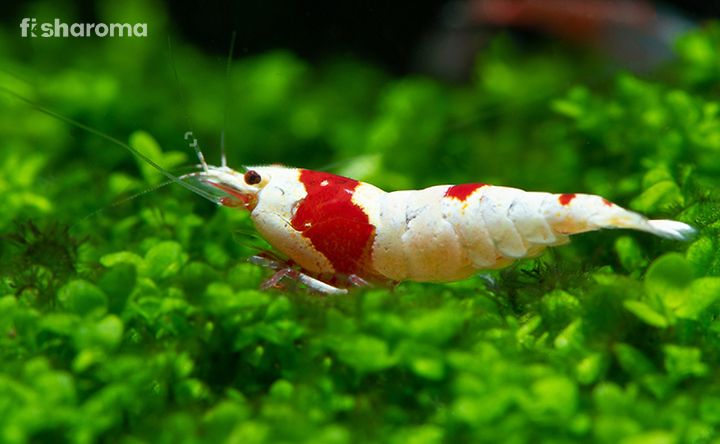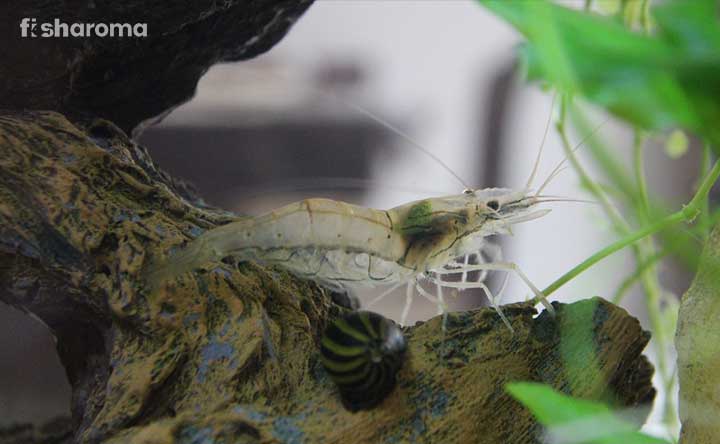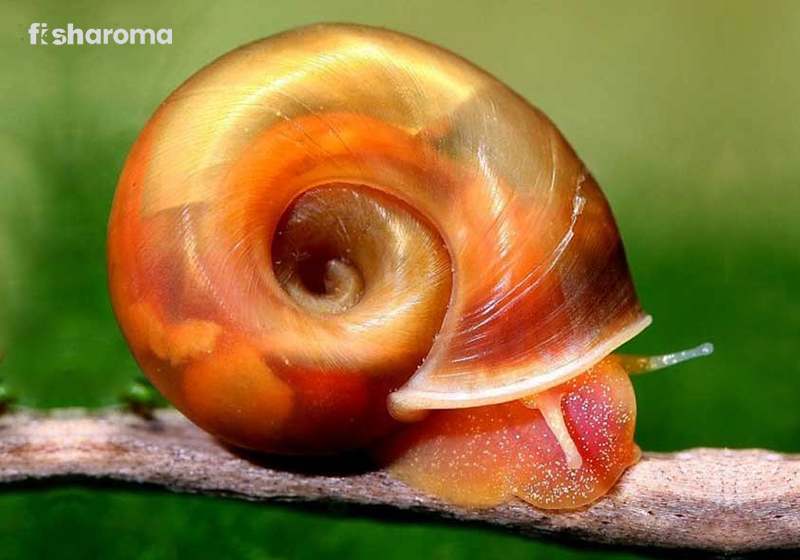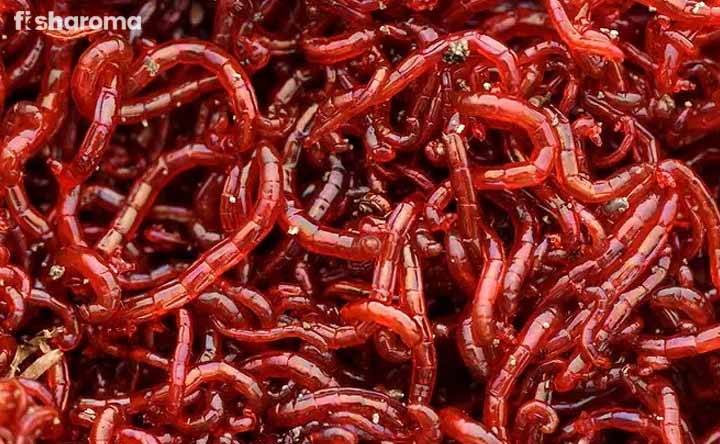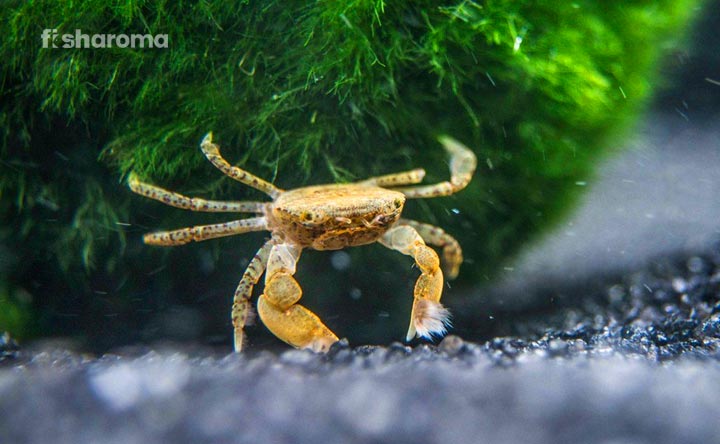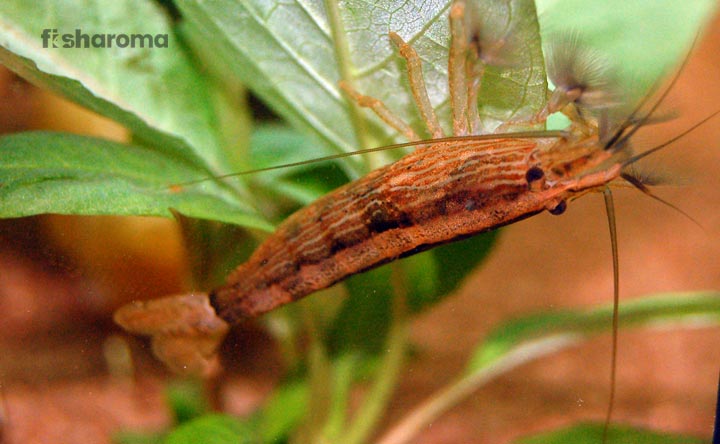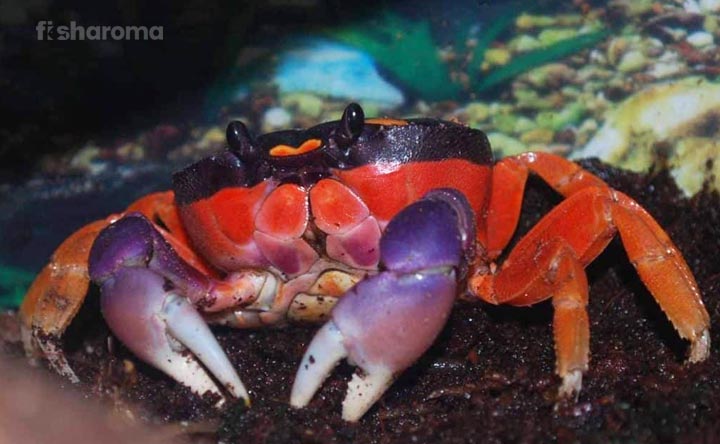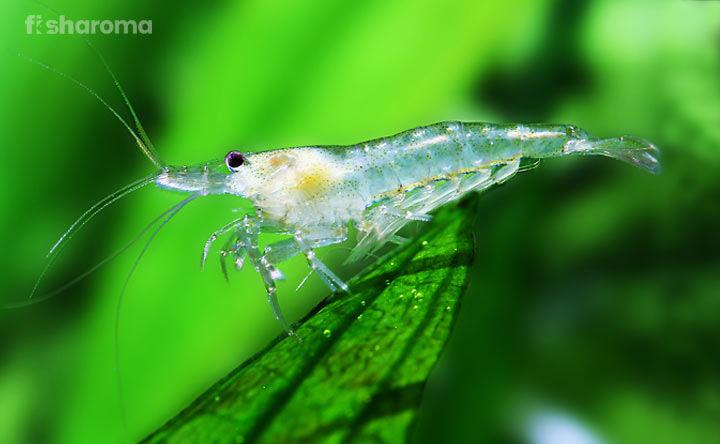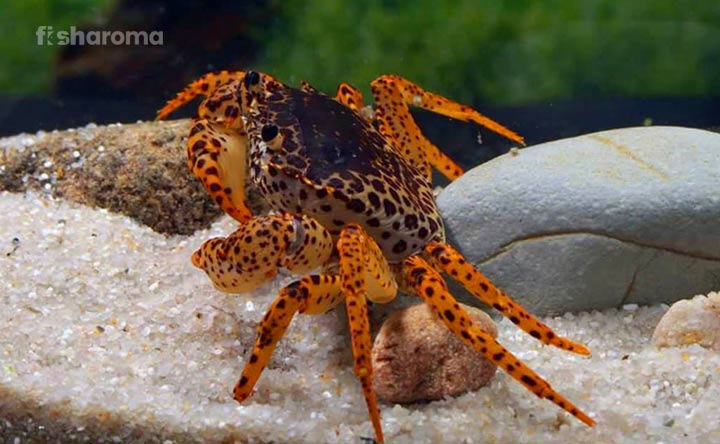Nerite Snails: An Important Care Guide To These Beautiful Tank Cleaners
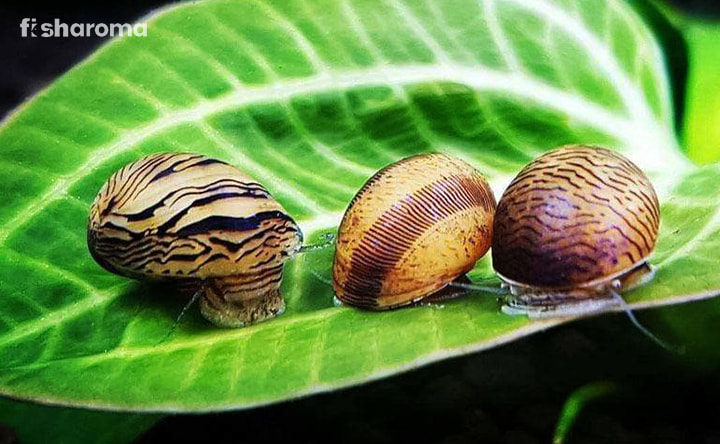
Nerite snails denote a group of around 250 snails, differing from each other in terms of their shell designs and patterns. They are extremely peaceful and really don’t need anything apart from staying space. Keeping one is never a matter of concern, as they are not fussy, neither are they difficult to deal with. With a peaceful co-existing nature, when it comes to housing with other fish species and snails, Nerite Snails ideally grace any tank, be it for beginners or pro aquarists.
Key Specifications of Nerite Snails
Here, we will talk about the Nerite Snail as a whole family and not about any specific species. Get to know them in a minute!
| Origin | Africa, Caribbean, and America |
| Lifespan | 1-5 years |
| Colours | Yellow, black, white, brown, and so more (depending on the particular type) |
| Temperament | Gentle |
| Size | Around 1 inch |
| Diet | Mostly Algae |
| Reproduction | Egg-laying |
| Maintenance Requirements | Easy |
| Tank Size | 5-10 gallons |
Overview
The Nerite is actually a family, scientifically identified as Neritidae, including a plethora of snails. Depending on their species or type, their habitats are different and have a wide range of geographical locations. The snails are small and completely oblivious to whatever is happening around them. These creatures are actually short-lived, but their movement is a sight to behold for aquarists.
Origin and Habitat of Nerite Snails
Nerite snails are mostly found in the Pacific, Indian and Atlantic oceans, sometimes at Carribeans. Their distribution majorly depends on the types of species. Such variety has caused so much confusion and there is not enough data about every species of the Nerites family.
Their habitat is so expanded that some of the species can thrive in freshwater while the rest of them are native to marine or brackish saltwater. Such creatures’ movement might be slow, but their drifting nature has caused some of the species to migrate into other zones.
Different Types of Nerite Snails
Since we are talking about the family of the snail, we can’t focus on any specific species when it comes to their colouration. Having said that, we can always vouch for one thing, that it has a typical snail-like body, with no such exceptional cases, but the shell is differently hued and so can be said regarding the patterns.
Here we will talk about some of the famous Nerite Snails who are fascinating to be kept as a pet.
| Types of Nerite Snails and Their Distribution | Appearance (Colour and Size) | Water Type and Longevity |
| Tiger Nerite Snail (Neritina semiconica) – This species is found in Africa, and live for around 1 year. | Orangish yellow body, resembling a wood colour, with some black spiral markings, arranged in a typical spiral pattern. The size is around 1 inch | They are found in freshwater or brackish water Their lifespan is majorly 3-5 year |
| Red Racer Nerite Snail (Vittina waigiensis) – The native place is the Philippines | The red body has variable colour patterns but the most common thing is a chevron or rather a “V” pattern on a red or yellow surface. The size is around 1.2 inches | Their ideal water type is marine or brackish water Lifespan is around 4 years |
| Black Racer Nerite Snail / Military Nerite Snail(Neritina pulligera) – They are inhabitants of Africa, India, and the Indo-Pacific | Mostly black or brown body, with some irregular graining patterns all over the body. Their average size is around 1-1-.2 inches | They reproduce in saltwater Lifespan is around 1 year |
| Zebra Nerite Snail (Neritina natalensis) – They are indigenous to Tanzania, Somalia, Mozambique, Kenya, South Africa | The striped pattern of the shell is a combination of yellow and black, sometimes you can see other pale shades than yellow. Some stripes are thicker and some are thinner. Their standard size is around 0.5-1 inch | Freshwater and brackish water is their ideal habitat Their lifespan is 1-2 years |
| Horned Nerite Snail (Clithon diadema/corona ) – These fancy-looking snails are from Southeast Asia | Yellow and black colourations with two prominent horns above their head. These horns are actually their defensive weapon. Their size is 3/4th of a 1 inch | Their natural habitat includes estuaries and most rivers The standard lifespan of the species is around 1 year |
| Midnight Black Nerite Snail (Vittina jovis) – This is a common species in Philippines coastal zones | The blackish-brown shell has ridge-like structures along with some golden irregular patterns. Their size is around 1.2 inches | Their natural domain is tropical or coastal waters Their lifespan is around 4 years |
| Olive Nerite Snail (Neritina reclivata) – They stay in the Caribbean and the Gulf of Mexico. | True to their name, their shade is olive green, with no regular or uniform pattern throughout their body, apart from their characteristically spiral pattern close to their shell head. Their size is ½ inch | Their natural habitat is always coastal salt waters. The lifespan of the snail is 1-2 years |
| Checkered Nerite Snail (Nerita tessellata) – Their distribution is in the Carribeans | The black and white combination creates a checkered pattern on the shell. Their size is around 0.78 inch | They are a product of saltwater Their lifespan is 1-2 years |
Behaviour of Nerite Snails
Snails are by default peaceful creatures that don’t have any interest in whatever is happening around them. Nerites snails are exactly like the same, without any behavioural exception. They are not at all nosey in other tank mates’ business. Their movement is slow and most of them find it extremely difficult to get back to their original position if they get upside down.
They can surprisingly stay inside their shell, motionless for a couple of days, but if they stay in the same position for more than that, then they might be sick. These snails will spend most of their time cleaning your tank! Sounds odd? Read the following diet section.
Whenever you are keeping a snail inside a tank, make sure you gently place them on the bottom of the tank, if you drop them impulsively, there are chances that it might fall on its back.
Lifespan of Nerite Snails
Most Nerite snails usually live for 1 year, but some species can live for even 4-5 years.
Diet of Nerite Snails
We have previously mentioned that they are considered to be wonderful tank cleaners, and that is because they slowly move across the tank and eat the algae that they find in their way. So, Nerite Snails are big-time and best algae eaters and there are no two ways about it. They are not interested in consuming anything else. So, while you set up your tank, make sure there are some algae-producer objects inside. The Nerite Snails will fend for themselves without any more external help. They can eat from the glass or from the substrate.
There are some specific kinds of soft and brown algae, mostly found on the bottom of the tank glass. These snails feast on them, and in the process, they can dig the substrate.
If you think the tank doesn’t have sufficient algae, you can give your snails some algae wafers. This will ensure that they are getting the only thing they love. No other aquatic plants are needed for them. For multiple Nerites in your tanks, distribute a wafer equally and place it close to them. They can eat in small quantities, and you need to make sure that they can consume whatever amount you are giving them. If the unfinished foods remain like that for a long time, you better clean them to maintain the cleanliness of the water.
You can give vegetables including broccoli, spinach, beans, and cucumbers but they should be blanched in a perfect way.
Tank Requirements of Nerite Snails
Setting up a snail tank is really not a thing of concern, as long you have profuse algae, to begin with. They literally don’t need anything other than water and algae.
Tank Size
These snails are small, so they don’t need much space, but you should always provide a comfortable tank from your end. A single snail can accommodate itself within a 5-gallon tank. In case, if you have bigger tanks you can keep multiple snails together. There is no territorial aggression amongst them. Our suggestion is that you go for tanks sizing around 10 or 20 gallons. This is because the snails produce a lot of waste and a small tank can be polluted faster than you imagine.
However, backing the 5-gallon tank requirement theory, we can say that if you want to house multiple snails, you have to add 5 gallons of water for each new member to balance their individual need inside the tank.
You can also consider the size of the tank as per the requirements of the fish mates of the snails. Since these Nerites are so fuss-free, they won’t mind the adjustment. More is always better, and you can apply the rule here as well.
Tank Lid
These inquisitive snails have a tendency, or rather a proclivity to go out of the tank. Remember tank is their only safe place and going out of it means plunging into death. They can’t guess the danger waiting outside and slowly moving out of the tank is common for them. They might get crushed over or be a victim of any pet animals of the house, or even lose the way to get back at the tank.
Remember, these are aquatic snails and they don’t survive if they are not around water. After a couple of hours their body will automatically dry up, and if it doesn’t get the water these snails will lose their lives.
To prevent all these stressful situations, you must provide a well-fitted lid to the tanks.
Substrate
While the snail’s outer shell is hard, its inner flashy parts are delicate. Since they crawl with their soft part, the substrate should be soft, eliminating all the possibilities of cuts. For this, you can choose a smooth sandy surface. They can dig the sands to find algae, and move across the tank in the process. For a heavily-planted tank, you may have to go for plant-based substrate without a doubt.
Filter
The filter is required, but you have to place it tactfully because these snails can even reach the filter in search of the food. There is no specific requirement, but Sponge or Power Filter will be enough. You can install an Internal or Hang-on-back Canister Filter as well, as long as they are providing a moderate water flow, which is ideal for these snails.
In case, your filter doesn’t satisfy the water flowing aspect, then you might have to go for a wave maker.
Ornaments
There are some necessary ornamental things that a snail-specific tank will need like, rocks, driftwoods, and some hiding places. While the woods and rocks will produce some algae, a rich food source for the snails, the hiding places will provide some climbing places for these gastropods.
Presence of Flora
Nerites are not fascinated by any aquatic plants in terms of feeding. So, that gives you an opportunity to put some plants that will act as a hiding place for the snails. Actually, they don’t really care if the tank has such plants or not, but thinking about other fish tankmates (who wouldn’t uproot the plants), you can keep some.
Since these Nerite Snails are sensitive to poor water quality, live plants can help maintain the cleanliness of the water.
Lighting
There is no particular requirement in terms of tank lights, but if you are keeping the snails with other fish, arrange the lights as per the fish’s requirements. Additionally, you need to see your pet snails inside the tank, (Otherwise, why would you pet them!) so set up such lighting that is neither too strong nor too dim for the Snails and you.
If your tank is full of aquatic plants, then you have to install 4500K lights, ideal for any plant-based tank. You can rely upon other sorts of lighting option, like fluorescent or LED that will illuminate the tank,
Cleaning Method
The Nerite snails clean the tank on their own, so you don’t need to bother much. But if you have given any algae wafers and that is not consumed, then you must clean it with a gravel vacuum to stop the growth of a certain type of water mould known as Saprolegnia.
Water Type of Nerite Snails
We have to keep in mind that Nerites can sustain in both freshwater and saltwater. So, there is no particular specification for the entire genus, we will be dividing the water parameters section into two groups (Based on their type).
Freshwater Nerite Snail Water Requirements
Temperature
The ideal temperature range for the snails inhabiting the freshwater is 22.2-25.5 Degrees Celsius.
pH Level
A moderate range of 7.0-8.02 is good. Too much acidic water is detrimental for the snail. Since these creatures have a lovely shell that defends them from predators, they will feel helpless and eventually die if the acid content of the water breaks down the shell, or pushes it through decay.
Hardness
The general hardness for the water should range between 5-8 dGH, while the carbonate hardness should be 5-15 dKH. The calcium content of the water enriches the shell of the snail.
Minerals
Nerite Snails can be fatally ill if any mineral and chemical compound fluctuate rapidly. While freshwater snails are good with less than 30 ppm of Nitrate, the Ammonia and Nitrite should be absolutely 0.
Saltwater Nerite Snail Water Requirements
Temperature
The marine water Nerite Snails are pretty much the same temperatures as their freshwater snail cousins. Set a range of 22-26 Degrees Celsius for the saltwater tanks.
pH Level
Your saltwater Nerite Snail can stay in waters that include a pH level of 8.1-8.2.
Hardness
The carbonate hardness of the water should be 8-12 dKH.
Minerals
As mentioned, calcium is a super essential ingredient that maintains the beautiful shell. So, it should be ranging from 350-450 ppm. As far as the Magnesium is concerned, that is a required ingredient as well. The tank water should contain 1250-1350 ppm of Magnesium.
Ammonia and Nitrite should be 0 but the Nitrate content should be less than 20 ppm.
Temperatures above 22 Degrees Celsius is mandatory because it helps the snail with a good metabolism capacity. You can keep a heater to make the tank warm enough for the snails, whenever required.
Replacement Procedure
Weekly partial water change ensures that optimum quality is prevailing and therefore, the sensitive snails can live healthily. Sudden or massive water change is not required, because that will be shocking and stressful for the snail.
While changing the water, make sure to check the quality and other parameters of the water. Any sudden glitches can affect the snail in a bad way. Maintain the below-mentioned specification when it comes to the water type.
Compatibility of Nerite Snail
The Nerite Snails are peace-loving creatures by nature, and they don’t mind sharing their tank with other fishes. Make sure you don’t keep the snails with aggressive fishes.
Suitable Tank Mates
Fishes that have a similar temperament with Nerite Snails, are best suitable to be their tank mates. We can surely suggest some of the names so that you can consider pretty companions of your snails.
- Amano Shrimp
- Cherry Shrimp
- Bamboo Shrimp
- Mystery Snail
- Trumpet Snail
- Kuhli Loaches
- Gouramis
- Bettas
- Guppies
- Mollies
- Tetras
- Otocinclus
- Cory Catfish
- Bristlenose Plecos
- Barbs
Unsuitable Tank Mates
Nerites have pretty shells, attracting many predators in the wild. So, you have to keep aggressive fish species out of your list if these snails are in your tank. Some of the incompatible tank mates are
- Goldfishes
- Tangs
- Cichlids
- Crayfishes
- Yoyo Loaches
- Striped Raphael Catfish
- Clown Loaches
Breeding of Nerite Snails
The most amusing thing about Nerite Snails is that, though they can breed in both marine and freshwater, for a successful hatching brackish water is needed. So, whatever may be the natural habitat for your pet snail is, you have to gradually introduce the breeding pair into brackish water set-up. The breeding tank should be equipped with a gravity range of 1.005-1.006.
Under these proper circumstances, the breeding pair will mate and the female snail will lay 20-50 eggs and that is followed by male snails successfully fertilizing them. Female snails always choose either the glass, or any other hard surface, like decorative objects for egg-laying. Within a couple of days, or it might take 10-15 days, the eggs will slowly hatch and the larvae will come out. The larvae will swim through the water on their own, without any help from their parents. Keep them in the breeding tank at least for a 1 month and a maximum of 2 months. After that, you can refund them to the main tank where they can thrive peacefully with their mates.
If your tank has sufficient algae then the larvae or baby snails will slowly start to feed on them. Otherwise, you need to provide food for them, at least a couple of times per day. You can increase the feeding time once because some snails thrive with thrice feeding discipline. Give them phytoplankton, spirulina powder, and last but not the least, algae wafers.
Diseases of Nerite Snails
Nerite Snails are not immune to illnesses, rather they can be affected by infectious things. In most of their health problems, their shells show signs and symptoms.
Deformed growth of the shell is one of the common problems, it makes the shell irregularly grow, or to have some holes on them. Also, if the tank water is way too acidic, or soft, then it makes the shell destroy slowly. The water will take away the calcium from the shell and it will lose its strength. The decaying can also be a sign that the snail is old enough where it is on the average of shedding it. If they are not given proper water conditions and food, then the shell might stop growing altogether. This is mostly due to the lack of nutrition and it should be a clincher to recheck all the services provided from your end.
Their fleshy antennas can be a treat to some aggressive species if kept together.
The shell decay can also be a sign of parasitic infection that you need to keep an eye on.
If there is no movement from the snail’s end, then observe it first and separate the snail from other healthy ones. Consult a professional so that you can attend the snail as immediately as possible.
Summary
The overall Nerite genus has some astounding species, beautiful, and docile. Since the colourations are extremely adored, breeders sometimes sell one with the name of another. It takes an experienced eye to actually distinguish between two species. Hope, the article has enlightened you in the best possible way. Maintaining them is actually easy and they just stay happy with just algae. If you can keep algae-producing elements like driftwood inside the tank, then no external food should be given.
The name of “Nerite” is given after the Greek God of Sea, known as Nerites.
Other Similar Care Guides
If the article has got your attention, we would want more of the same for our below-mentioned articles
- Ramshorn Snail – The beautiful snail is found in freshwater. This is a hardy species that makes a wonderful pet for all aquarists.
- Mystery Snail – The Southamerican snail comes in a wide range of colours. It is peaceful and can stay with other fishes without any fuss.
- Assassin Snail – The snail is native to Southeast Asia. It is a popular pet, that demands your attention.

